
Do you ever reach the end of your day and feel a strange mix of exhaustion and unfulfillment? You were busy, your mind was constantly engaged, but what did you actually do? You might recall scrolling through feeds, answering a flurry of messages, and falling down a rabbit hole of short videos. Your phone, once a simple tool for communication, has become the default setting for your attention.
This feeling is the quiet cost of constant distraction. It’s the erosion of our ability to focus deeply, to be present with loved ones, and to simply sit with our own thoughts. The promise of infinite connection has left many of us feeling more disconnected than ever.
But what if you could reclaim that focus without having to abandon technology altogether? What if you could reset your relationship with your devices, turning them back into tools that serve you, not the other way around? That’s the promise of a digital detox.
This isn’t about escaping to a remote cabin and swearing off screens forever. This is a realistic, practical guide for busy people living in a digital world. It’s about creating intentional boundaries that allow you to unplug, recharge, and find a healthier balance. This weekend detox guide will help you quiet the digital noise so you can hear your own life more clearly.
📚 Table of Contents
- Why Is It So Hard to Unplug? Understanding the Attention Economy
- Building Your Digital Wellness Toolkit: Proactive Routines
- Master Your Focus Modes
- Practice Notification Triage with Batching
- Design a Minimalist Home Screen
- Set Intentional App Timers
- Curating Your Physical Environment for Less Screen Time
- Your Weekend Digital Detox Plan: A Practical Walkthrough
- Troubleshooting Common Challenges
- Handling Moments of Relapse
- Navigating FOMO (Fear Of Missing Out)
- Managing Social Expectations
- Making Necessary Exceptions
- Frequently Asked Questions (FAQ)
- How can I do a digital detox while still respecting my privacy? Some wellness apps seem to collect a lot of data.
- I work night shifts and my schedule is unconventional. How can I adapt this guide?
- As a parent, I need to be reachable for my kids. How can I unplug safely?
- My job requires me to be “on call” or responsive, even on weekends. How do I manage a detox?
- Conclusion: Your Journey Starts with a Single, Small Change

Why Is It So Hard to Unplug? Understanding the Attention Economy
If you find it difficult to put your phone down, it’s important to know that you are not alone, and it is not a failure of willpower. Our devices and the applications on them are designed by some of the brightest minds in the world with a singular goal: to capture and hold your attention for as long as possible. Your attention is a valuable commodity, and they have become masters at mining it.
This process often relies on a powerful psychological principle called a dopamine loop. Dopamine is a neurotransmitter in your brain associated with pleasure and reward. Here’s a simple breakdown of how it works in the context of your phone:
First, there’s a trigger. This is often a notification—a buzz, a ping, or a red badge appearing over an app icon. Your brain recognizes this as a potential for a reward.
Next, you perform an action. You pick up your phone and open the app to see what the notification is about. This action is simple, almost automatic, and requires very little effort.
Finally, you receive a variable reward. This is the crucial part. Sometimes, the notification is for something wonderful—a heartfelt message from a friend, a like on your photo, or an exciting piece of news. Other times, it’s just a generic marketing email or a trivial update. The reward is unpredictable. This variability is what makes the loop so compelling. It’s the same mechanism that makes slot machines in Las Vegas so addictive. Your brain craves the potential for that next great reward, so it keeps you coming back for more.
Every time you pull to refresh your feed, you are essentially pulling a lever on a digital slot machine. Will it be a funny video? A stressful news article? A message from a loved one? The uncertainty keeps you engaged and scrolling, often long after your initial intention for checking your phone has been forgotten. Understanding this mechanism is the first step toward breaking free. It shifts the blame from a perceived personal failing to an awareness of a system designed to hook you. With this knowledge, you can begin to build intentional systems of your own to counteract it.
For those interested in the broader mental health implications of technology use, the American Psychological Association offers a wealth of resources and research on the subject.
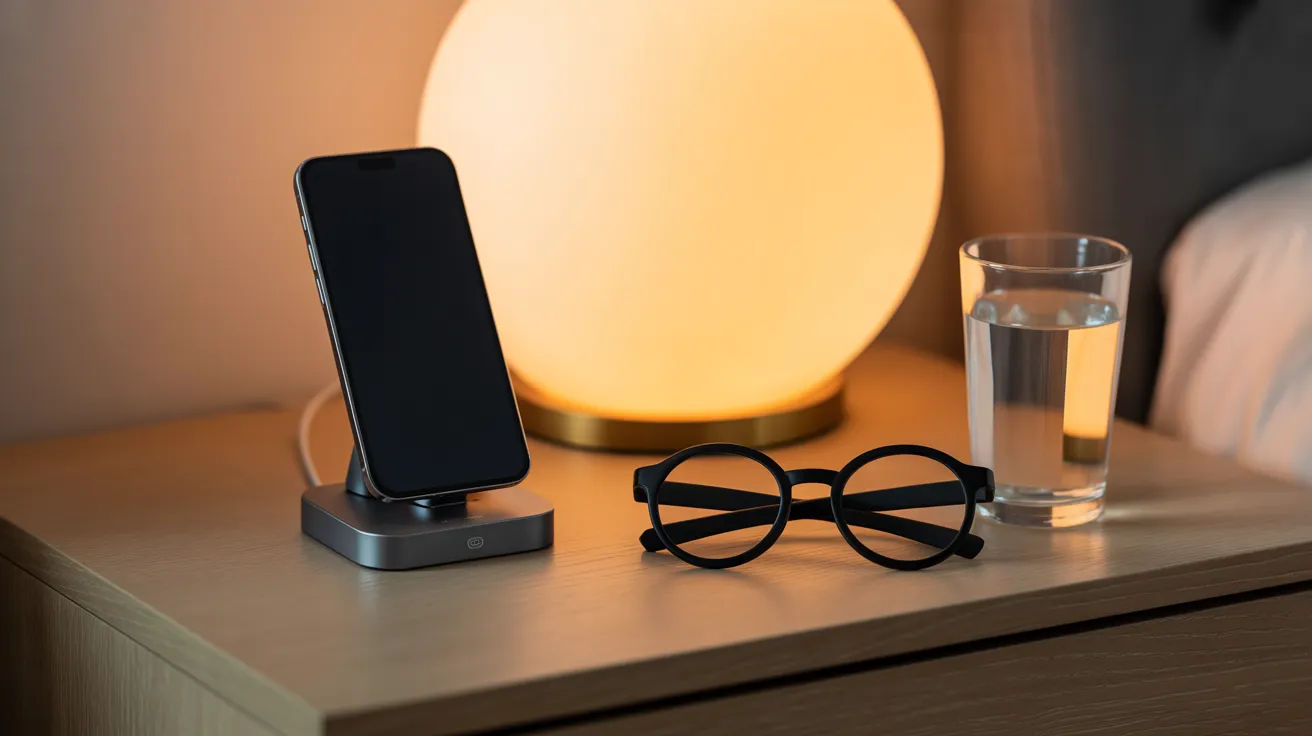
Building Your Digital Wellness Toolkit: Proactive Routines
A successful digital detox isn’t just about what you stop doing; it’s about what you start doing instead. Creating intentional routines around your technology use is the most effective way to build lasting change. Instead of relying on sheer willpower to resist temptation, you create a system that makes healthier choices the easier option.

Master Your Focus Modes
Modern smartphones come with powerful, underutilized tools called “Focus Modes” (on iOS) or “Digital Wellbeing” settings (on Android). These are more than just a simple “Do Not Disturb” function. They allow you to create specific profiles for different contexts, like “Work,” “Personal Time,” or “Sleep.”
For your “Work” focus, you can choose to allow notifications only from work-related apps like Slack and your calendar, and from key contacts like your boss or your family. When you activate it, all other distracting apps and notifications are silenced. For “Personal Time,” you might silence all work apps and allow social apps and messages from friends. This act of curating your digital environment helps you align your attention with your intention.
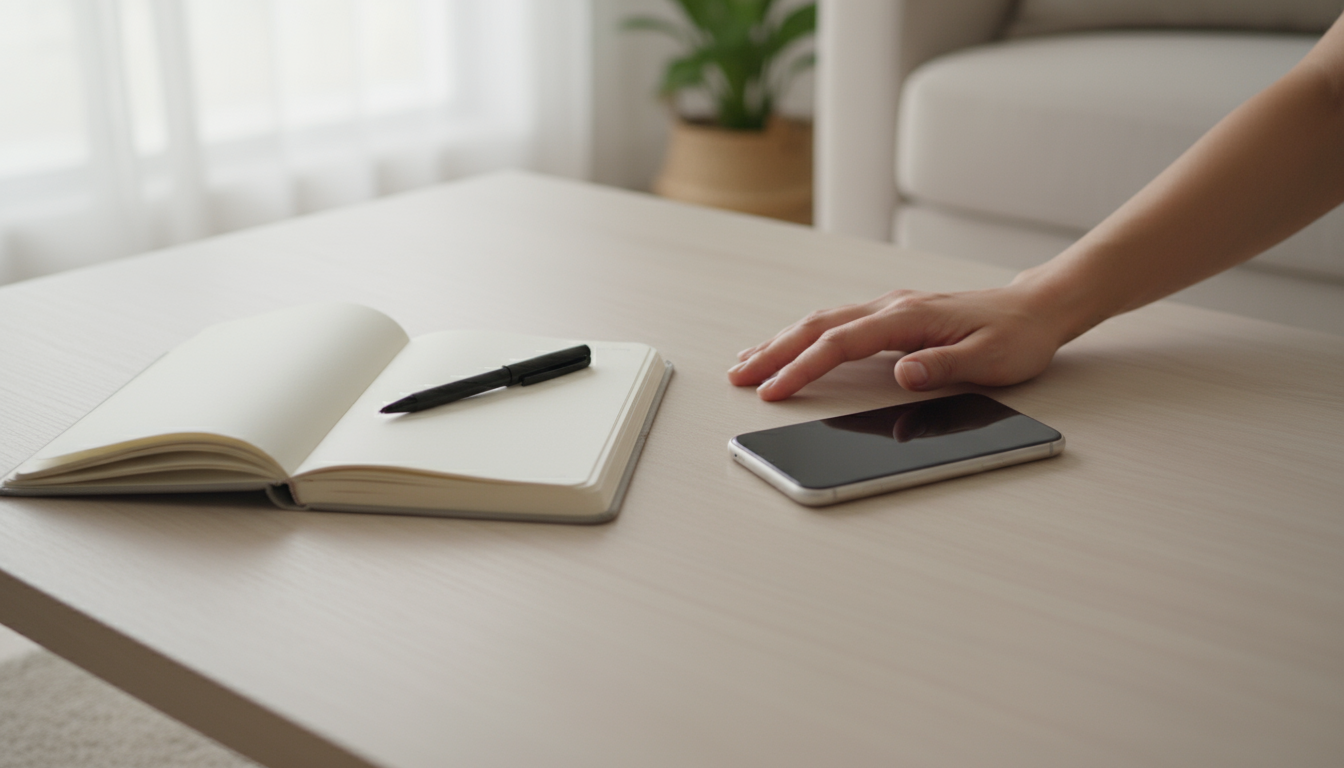
Practice Notification Triage with Batching
Constant notifications are the enemy of deep focus. Each ping pulls you out of what you’re doing, and it can take several minutes to regain your concentration. The solution is notification batching. This is the practice of turning off most non-urgent notifications and checking them at predetermined times of the day, rather than as they arrive.
Start by going through your phone’s settings and turning off notifications for every app that is not time-sensitive and human-to-human. Do you really need an alert every time someone likes your post or a brand announces a sale? Probably not. For the notifications that remain, schedule two or three times a day to check them—perhaps at 10 AM, 2 PM, and 6 PM. By batching them, you deal with them on your terms, transforming a constant stream of interruptions into a manageable, scheduled task.

Design a Minimalist Home Screen
Your home screen is prime real estate. If it’s cluttered with bright, enticing apps, it becomes a minefield of potential distractions every time you unlock your phone. A powerful change is to design a minimalist home screen.
Move all your most tempting apps—social media, news, games—off the first screen and into a folder on the second or third page. This adds a small but significant layer of friction. You now have to actively seek out the distraction instead of having it presented to you. Reserve your home screen for utility-based apps only: your calendar, maps, notes, and camera. For an even more advanced technique, consider turning your screen to grayscale mode. When the vibrant colors are gone, the apps become far less appealing to your brain, reducing the subconscious pull to open them.

Set Intentional App Timers
How much time do you actually spend on certain apps? Most of us would be shocked by the real numbers. Use your phone’s built-in screen time features to set daily time limits for your most-used applications. If you find you’re spending two hours a day on Instagram, try setting a timer for 45 minutes.
When you reach your limit, the phone will notify you and often lock you out of the app for the rest of the day (though you can usually override it). This isn’t about punishment; it’s about awareness. The timer acts as a conscious check-in, forcing you to ask, “Is this really how I want to be spending my time right now?” Often, that simple interruption is enough to break the spell of the scroll and encourage you to do something else.
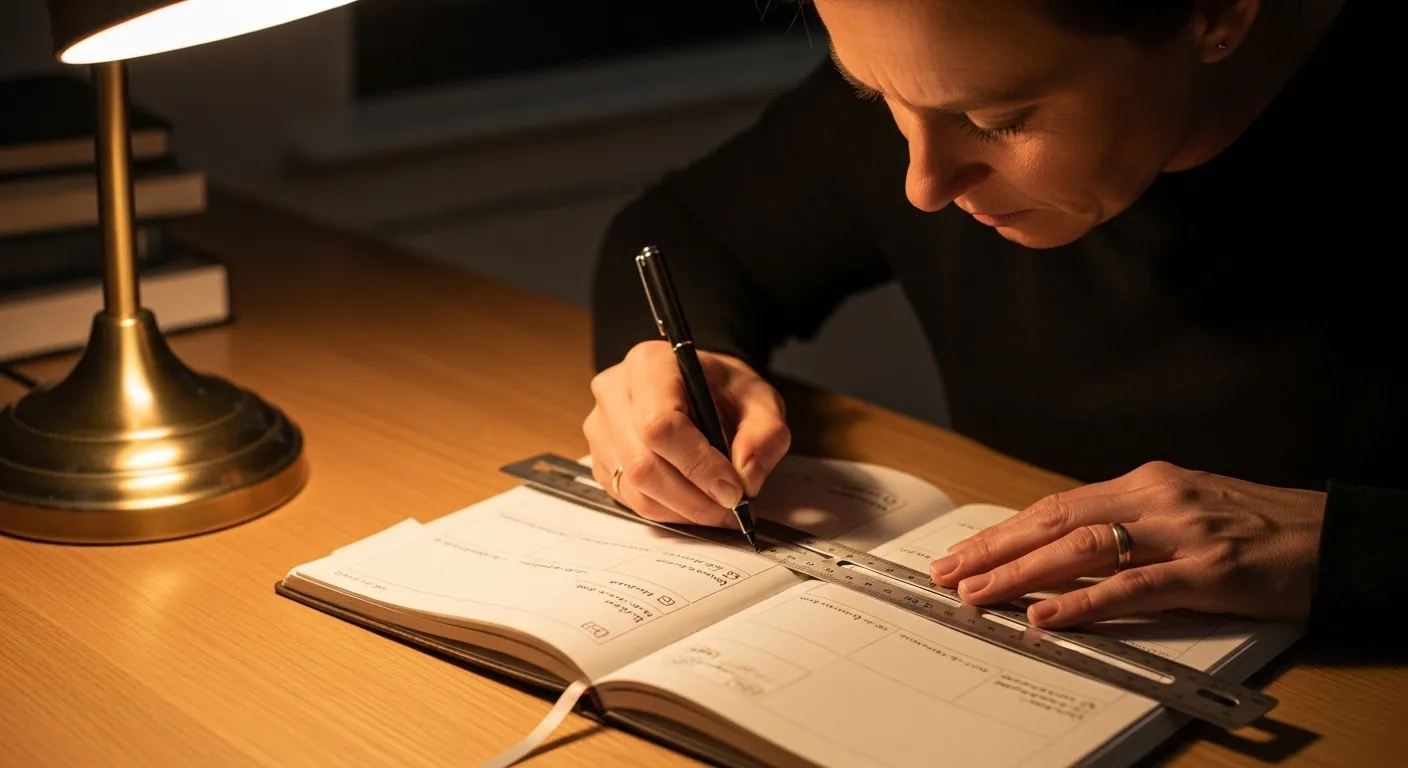
Curating Your Physical Environment for Less Screen Time
Your physical surroundings have a profound impact on your habits. By making small, strategic changes to your environment, you can create cues that encourage you to unplug and make it more difficult to fall into old patterns of distraction. This is about designing your space to support your digital wellness goals.
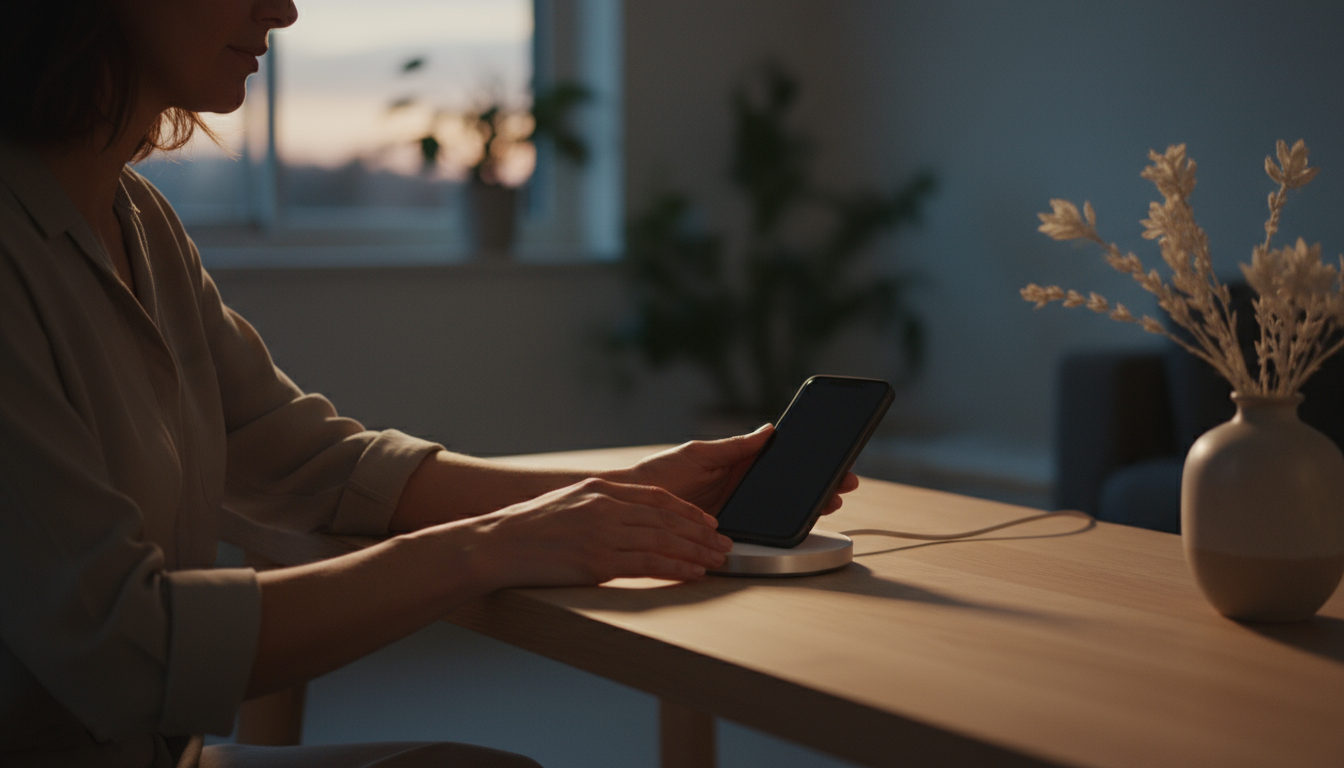
Establish Screen-Free Zones
One of the most effective strategies for reducing screen time is to designate certain areas of your home as completely screen-free zones. This creates a physical boundary that your brain learns to associate with non-digital activities. The two most powerful places to start are the bedroom and the dinner table.
The dinner table is a space for connection—with your food and with the people you are sharing it with. Making it a screen-free zone allows for conversation and mindful eating, rather than distracted scrolling. The bedroom should be a sanctuary for rest and intimacy. When you bring your phone to bed, you bring the entire world’s worth of stress, work, and stimulation with you. By banning screens from the bedroom, you protect your sleep and create a space dedicated solely to restoration.

Design a Sleep-Friendly Evening Routine
The quality of your sleep is deeply connected to your technology habits. The light emitted from our screens contains a high concentration of blue light. This specific wavelength of light is particularly effective at suppressing the production of melatonin, the hormone your body produces to regulate sleep-wake cycles. Exposure to blue light in the evening can trick your brain into thinking it’s still daytime, making it harder to fall asleep and reducing the quality of your rest.
To combat this, create a “digital sunset.” This means putting away all screens—phones, tablets, laptops, and televisions—at least 60 to 90 minutes before your intended bedtime. Use this time for calming, analog activities. Read a physical book. Listen to a podcast or calm music on a smart speaker. Do some light stretching. Talk with your partner. This buffer period allows your brain to wind down and your body to begin producing melatonin naturally. For more expert information on sleep hygiene, the Sleep Foundation is an excellent resource.
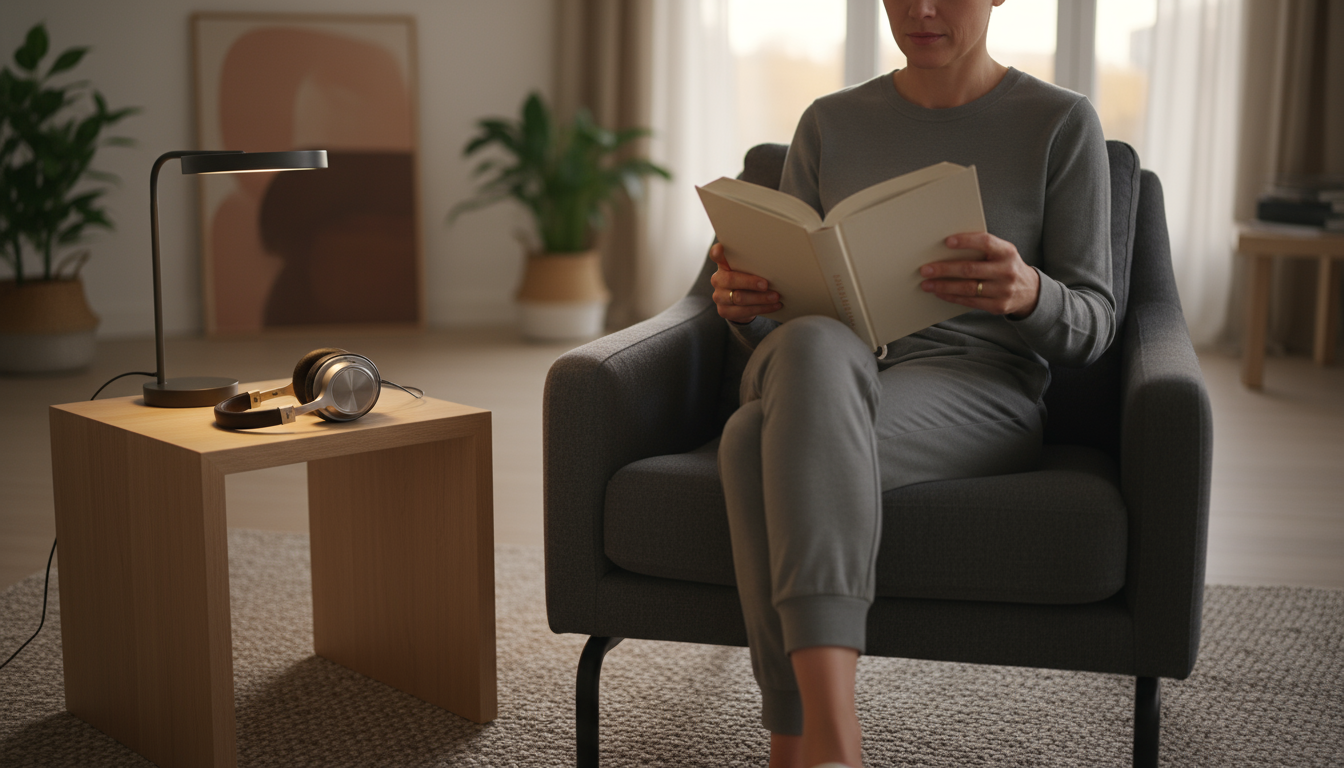
Create Cues for Deep Work
Just as you can create cues for rest, you can also create cues for focus. If you work from home, it can be easy to blur the lines between work and leisure, with distractions always just a click away. Counter this by creating a specific environment that signals to your brain that it’s time for deep, focused work.
This doesn’t require a separate office. It could be as simple as clearing your desk of everything except your computer and a notepad. You might use a specific lamp that you only turn on when you’re doing focused work. Putting on noise-canceling headphones, even without music, can also be a powerful cue. The ritual itself is what matters. The act of setting up your deep work space sends a clear message to your brain: for the next block of time, we are focusing on a single, important task. This makes it easier to resist the siren call of a quick social media check or a distracting news site.
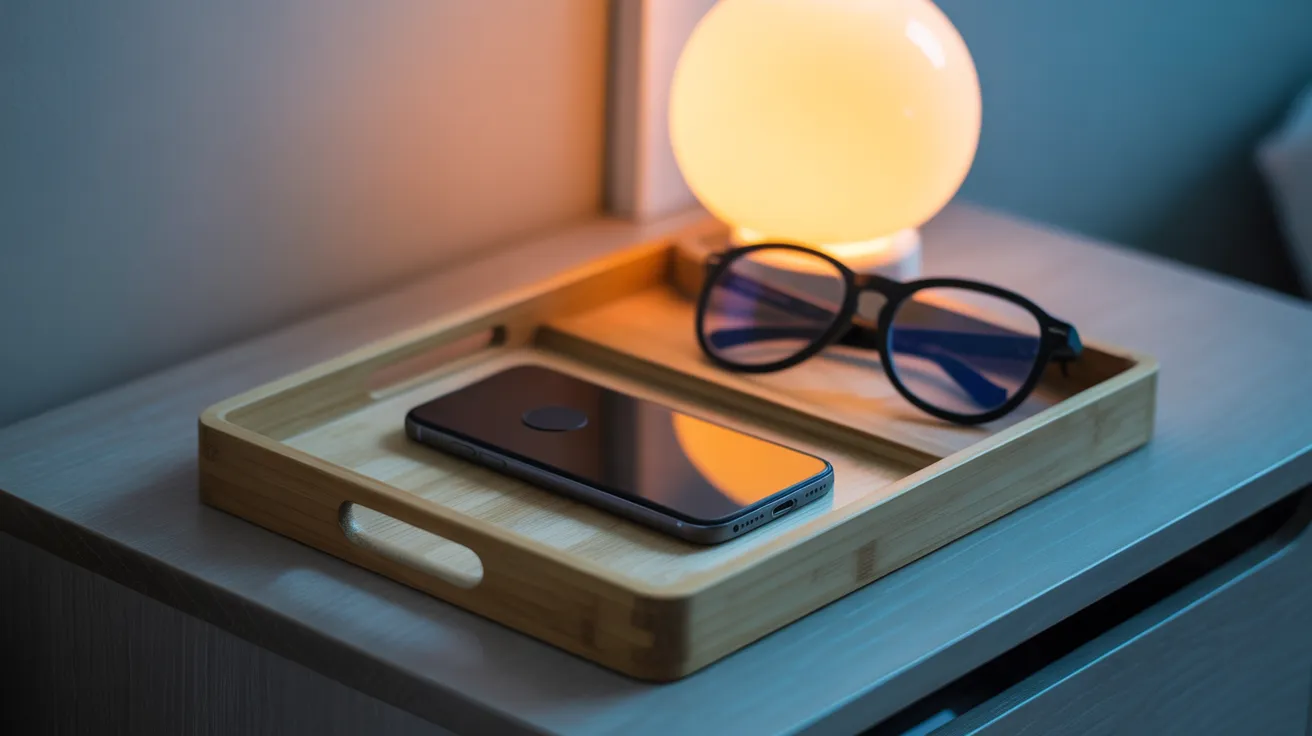
Your Weekend Digital Detox Plan: A Practical Walkthrough
The idea of a “detox” can sound extreme, but it doesn’t have to be. This plan is not about total digital abstinence. It’s a “dimmer switch” approach, designed to help you consciously lower the volume of digital noise for 48 hours. The goal is to replace mindless consumption with intentional use and fulfilling, real-world activities.
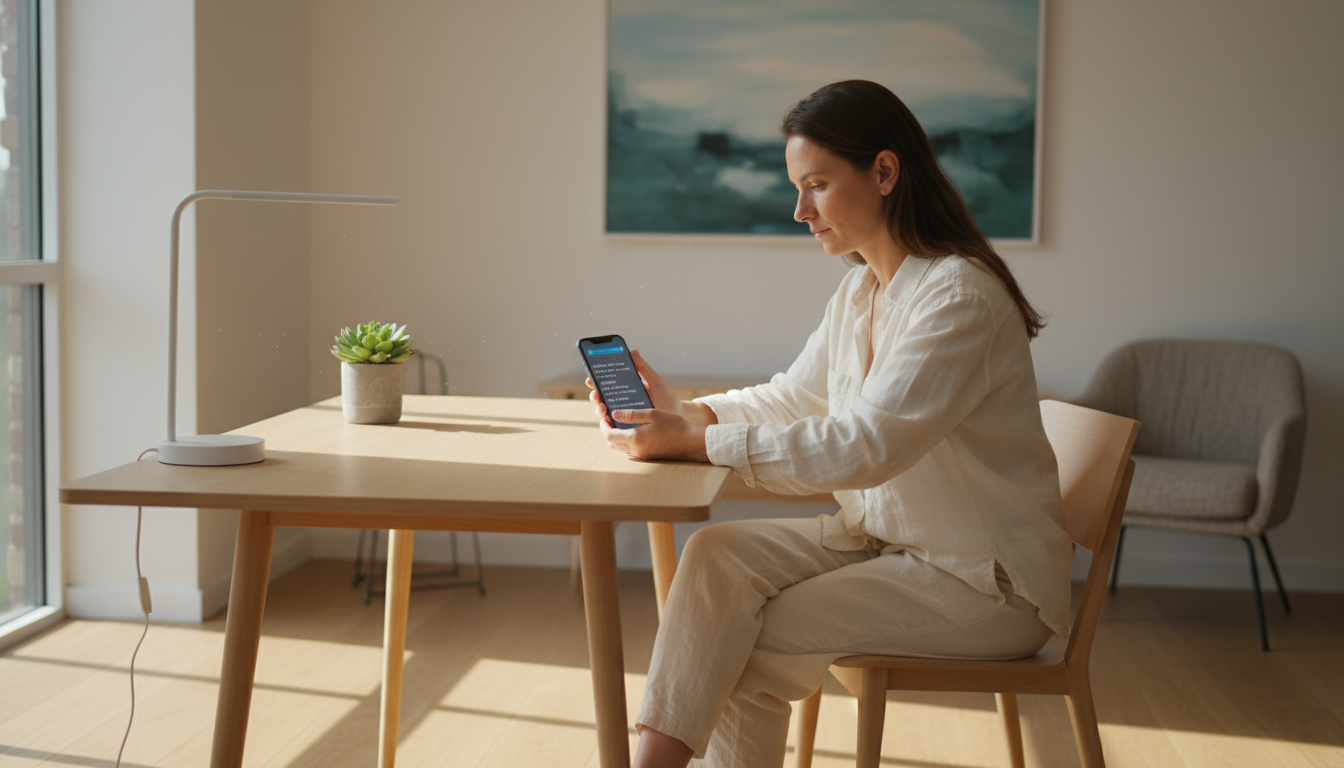
A 10-Minute Evening Wind-Down Ritual
Before you even get to the weekend, you can start with a small but powerful evening routine. This 10-minute ritual helps you disconnect from the day and prepares your mind for restful sleep. Practice this every night to build a consistent habit.
Step 1 (1 minute): Announce your intention. Tell your partner, family, or even just yourself, “I’m starting to wind down for the night and will be off my phone.” This verbal commitment reinforces your goal.
Step 2 (1 minute): Set your phone to DND (Do Not Disturb) mode. This function silences all incoming calls, texts, and notifications, ensuring you won’t be disturbed. You can usually customize it to allow calls from specific emergency contacts to come through.
Step 3 (1 minute): Plug your phone in to charge—across the room. This is the most critical step. Creating physical distance makes it much harder to mindlessly grab it from your nightstand in the middle of the night or first thing in the morning.
Step 4 (7 minutes): Engage in an analog activity. Do some gentle stretching, tidy up one small area of your room, write down three things you’re grateful for in a journal, or read a few pages from a physical book. The activity itself is less important than the act of doing something that doesn’t involve a screen.
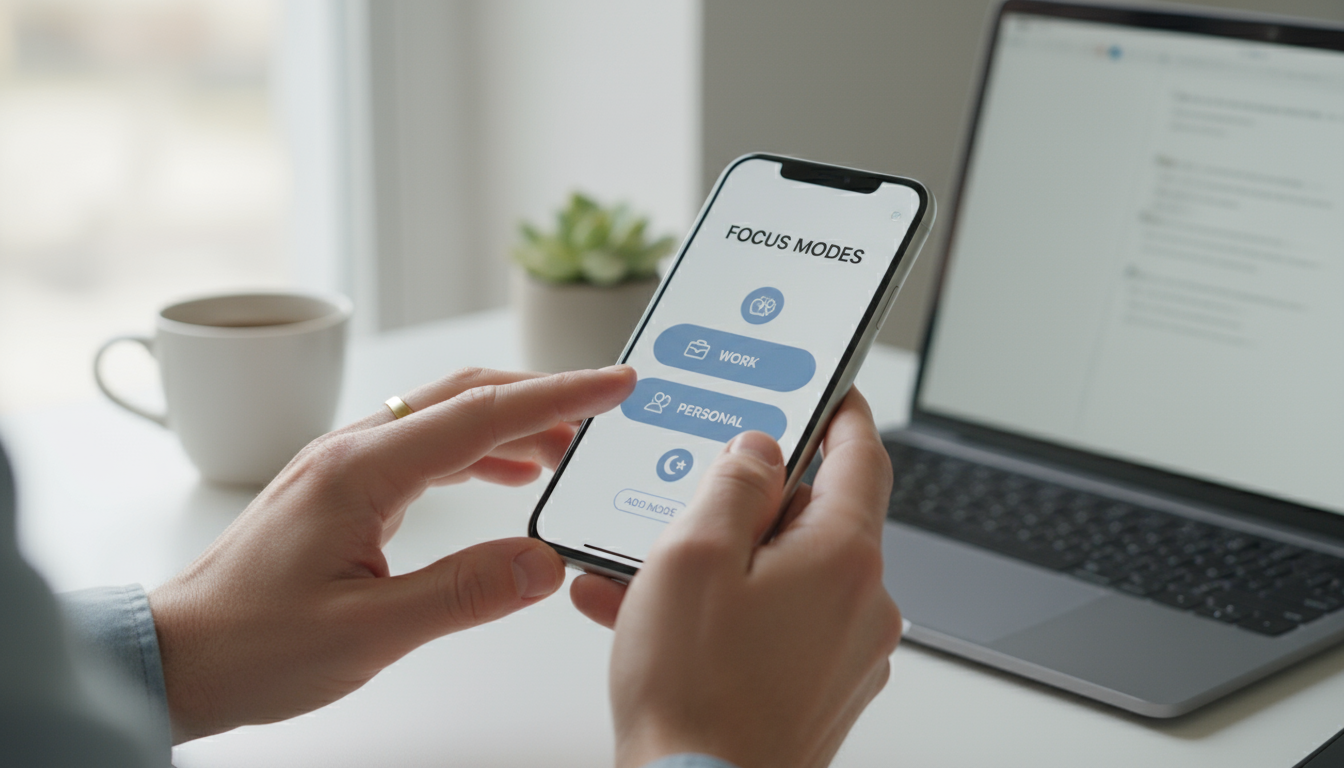
The “Dimmer Switch” Weekend Detox Plan
This is a realistic schedule for a weekend. Feel free to adapt it to your own lifestyle and commitments. The key principle is intention.
Friday Evening: The Digital Sunset (6 PM onwards)
Your detox begins by intentionally transitioning from your work week to your weekend. Instead of collapsing onto the couch and scrolling, make a conscious plan for your evening. After you’ve finished any necessary final work emails, put your phone and laptop away. Plan a completely screen-free activity. This could be cooking a new recipe with a physical cookbook, playing a board game with family, going for a walk around your neighborhood, or meeting a friend for dinner where you both agree to keep your phones in your pockets.
Saturday: Intentional Connection & Movement (All Day)
Morning (Until 12 PM): Dedicate the entire morning to screen-free activities. This is your time to reconnect with yourself and your physical environment. Go for a long walk or a hike. Visit a local farmer’s market. Spend time on a hobby like gardening, painting, or playing an instrument. Read the newspaper or a book with a cup of coffee. The goal is to start your day without the input of the digital world.
Afternoon (1 PM – 3 PM): This is your scheduled “tech time.” Allow yourself a specific, timed window to check in. You can respond to important messages, catch up on social media, or read a few articles. Set a timer. When the timer goes off, log out and put the device away. This structure prevents a “quick check-in” from turning into a three-hour scroll session.
Evening (6 PM onwards): Just like Friday, make your evening a screen-free zone. This is a great time for social connection. Host a small dinner, call a friend or family member for a long conversation (using your phone as a phone!), or go out to see a live performance.
Sunday: Creative Reset & Planning (All Day)
Morning (Until 12 PM): Use this time for creative or productive pursuits that don’t involve passive consumption. Instead of scrolling through social media, use your tech intentionally. For example, use a tablet for digital drawing, follow a yoga class on YouTube (without getting sidetracked), use an app to learn a few chords on the guitar, or spend an hour writing on your computer with the internet turned off.
Afternoon (1 PM – 3 PM): This is your time for life admin and planning. Use your devices to plan your week ahead. Organize your calendar, make a grocery list, and handle any necessary online chores. This is purposeful, productive screen time that sets you up for a less stressful week.
Evening (6 PM onwards): Re-engage your 10-minute evening wind-down routine. Use the quiet time to reflect on your weekend. How do you feel? What did you enjoy? What was challenging? This reflection helps solidify the digital detox benefits and motivates you to carry some of these habits into the coming week.

Troubleshooting Common Challenges
Embarking on a digital detox, even a short one, can be challenging. You will likely encounter moments of discomfort, boredom, or social pressure. Anticipating these hurdles and having a plan to address them can make all the difference between a frustrating experience and a successful reset.

Handling Moments of Relapse
There will be a moment when, out of pure habit, you reach for your phone to mindlessly scroll. This is not a failure; it’s a data point. The muscle memory is strong. When this happens, don’t judge yourself. Simply pause, take a breath, and ask, “What is my intention right now?”
Are you looking to escape a feeling of boredom? Are you anxious about something? Are you genuinely trying to look up information? Acknowledge the impulse and then gently redirect yourself back to your original goal. If you’re bored, have a pre-made list of analog activities you enjoy—reading, stretching, tidying, listening to music. The goal isn’t perfection, but progress and self-awareness.
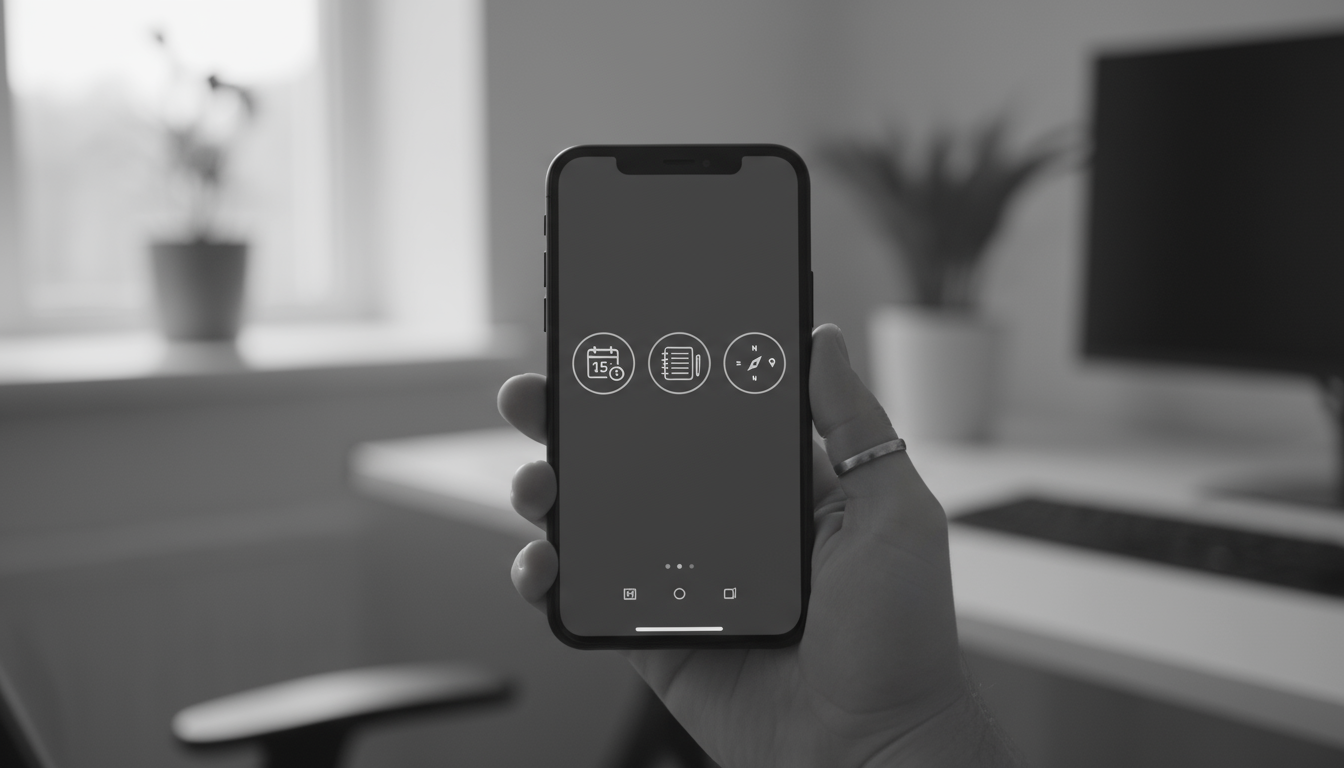
Navigating FOMO (Fear Of Missing Out)
FOMO is a powerful driver of our digital habits. We worry that if we unplug, we’ll miss a crucial update, an inside joke, or an invitation. The truth is, most of what happens online is not urgent. The world will not stop if you don’t see a post for a few hours.
Try to reframe FOMO as JOMO: the Joy Of Missing Out. Instead of worrying about what you’re missing online, focus on the joy of what you are gaining in the real world: deeper focus, genuine connection with the people you’re with, and a sense of calm. You are choosing to miss out on digital noise in favor of your own well-being. Over time, you’ll realize that anything truly important will find its way to you through a more direct channel.

Managing Social Expectations
One of the biggest hurdles can be the expectation from others that you are always available and instantly reachable. It’s helpful to be proactive and manage these expectations. Let your close friends and family know your plan in advance. A simple text message like, “Hey, I’m doing a bit of a digital detox this weekend to recharge, so I’ll be slow to respond to texts. If it’s an emergency, please call me!” sets a clear boundary.
This not only frees you from the pressure to respond immediately but also models healthy behavior for others. You might be surprised how many people are inspired to try it themselves.

Making Necessary Exceptions
A digital detox should reduce stress, not create it. There are legitimate reasons to use your devices, and it’s important to allow for them. Perhaps you need to use Google Maps to navigate to a new place, look up a recipe while cooking, or coordinate plans with a friend you are meeting.
The key is to be a “digital minimalist,” not a “digital luddite.” Use your phone as a single-purpose tool. Look up the directions, then put the phone down. Find the recipe, then put the phone down. Make the call, then put the phone away. Avoid letting a single, purposeful task cascade into an hour of mindless browsing. Grant yourself grace for necessary use and then gently guide yourself back to your detox.

Frequently Asked Questions (FAQ)
As you begin to explore a more balanced relationship with technology, certain practical questions often arise. Here are answers to some of the most common concerns.
How can I do a digital detox while still respecting my privacy? Some wellness apps seem to collect a lot of data.
This is a very valid concern. You don’t need to download any special apps to have a successful digital detox. In fact, relying on your phone’s built-in, native features is the most privacy-conscious approach. Tools like “Screen Time” on iOS and “Digital Wellbeing” on Android are developed by the operating system creators (Apple and Google) and are integrated directly into the phone. They track your usage locally on your device without sending it to third-party developers. By using these native tools for app timers, focus modes, and usage reports, you can get all the digital detox benefits without compromising your data privacy.
I work night shifts and my schedule is unconventional. How can I adapt this guide?
The principles of a digital detox are universal, even if the timing needs to be adapted. The core idea is to create distinct periods of connection and disconnection. Instead of a traditional “weekend,” think in terms of your “days off.” Your “digital sunset” might happen at 9 AM after a night shift, rather than 9 PM. The key is to create a 60-90 minute screen-free buffer before you go to sleep, whenever that may be. Similarly, schedule your “tech time” blocks during your “afternoon,” whatever time of day that falls for you. The framework is flexible; apply the concepts of intentional use, screen-free zones, and pre-sleep wind-downs to your unique schedule.
As a parent, I need to be reachable for my kids. How can I unplug safely?
This is a non-negotiable for most parents, and a detox should not interfere with it. This is where customizing your phone’s Do Not Disturb (DND) or Focus modes is essential. On both iOS and Android, you can designate specific contacts as “favorites” or “emergency bypass” contacts. When you activate DND, your phone will silence all notifications except for calls and texts from these specific people. You can unplug from the noise of the entire internet while remaining fully available to your children, their school, or a babysitter. This allows you to have peace of mind while still getting the restorative digital detox benefits.
My job requires me to be “on call” or responsive, even on weekends. How do I manage a detox?
In this situation, a full detox may not be possible, but a “digital de-clutter” is highly achievable. The goal is to surgically remove non-essential digital tasks. You can create a “Work” Focus mode that silences everything on your phone except for your work email app, Slack, and calls from your boss. This allows you to fulfill your professional obligations without getting pulled into the vortex of social media or personal group chats. It’s about creating a digital “cone of silence” around everything that isn’t directly related to your on-call duties. This approach helps preserve your mental energy and attention for what truly matters, both at work and at home. For more on the health impacts of workplace stress, the National Institutes of Health provides comprehensive research and information.

Conclusion: Your Journey Starts with a Single, Small Change
Reclaiming your time and attention from the digital world is not a one-time fix; it’s an ongoing practice. This guide provides a map, but you are the one who will walk the path. Don’t feel pressured to implement every single suggestion at once. The goal is not perfection, but intentionality. It’s about shifting from a passive, reactive relationship with your technology to an active, conscious one.
The most profound changes often begin with the smallest steps. By integrating tiny, sustainable habits into your daily life, you build momentum. You begin to experience the profound digital detox benefits: a calmer mind, deeper focus, more present relationships, and a richer experience of the world around you. You’ll remember what it feels like to be bored, and you’ll discover the creativity that can blossom in that quiet space.
This week, instead of trying to do everything, choose just one or two small things to adopt. Here are a few ideas to get you started:
* Try the 10-minute evening wind-down tonight. Just for one night, charge your phone across the room and read a book before bed. See how it feels.
* Clean up your home screen. Take five minutes to move your most distracting apps into a folder on another page. Create a small bit of friction.
* Implement a screen-free meal. Choose one meal a day—breakfast, lunch, or dinner—to eat without any screens. Just focus on your food and your thoughts, or the company you’re with.
Pick one. Start there. Notice the difference. Your attention is your most valuable resource. It’s time to start investing it where it truly matters.
Disclaimer: The information provided in this article is for informational purposes only and is not intended to be a substitute for professional medical or psychological advice, diagnosis, or treatment. Always seek the advice of your physician or other qualified health provider with any questions you may have regarding a medical condition.






